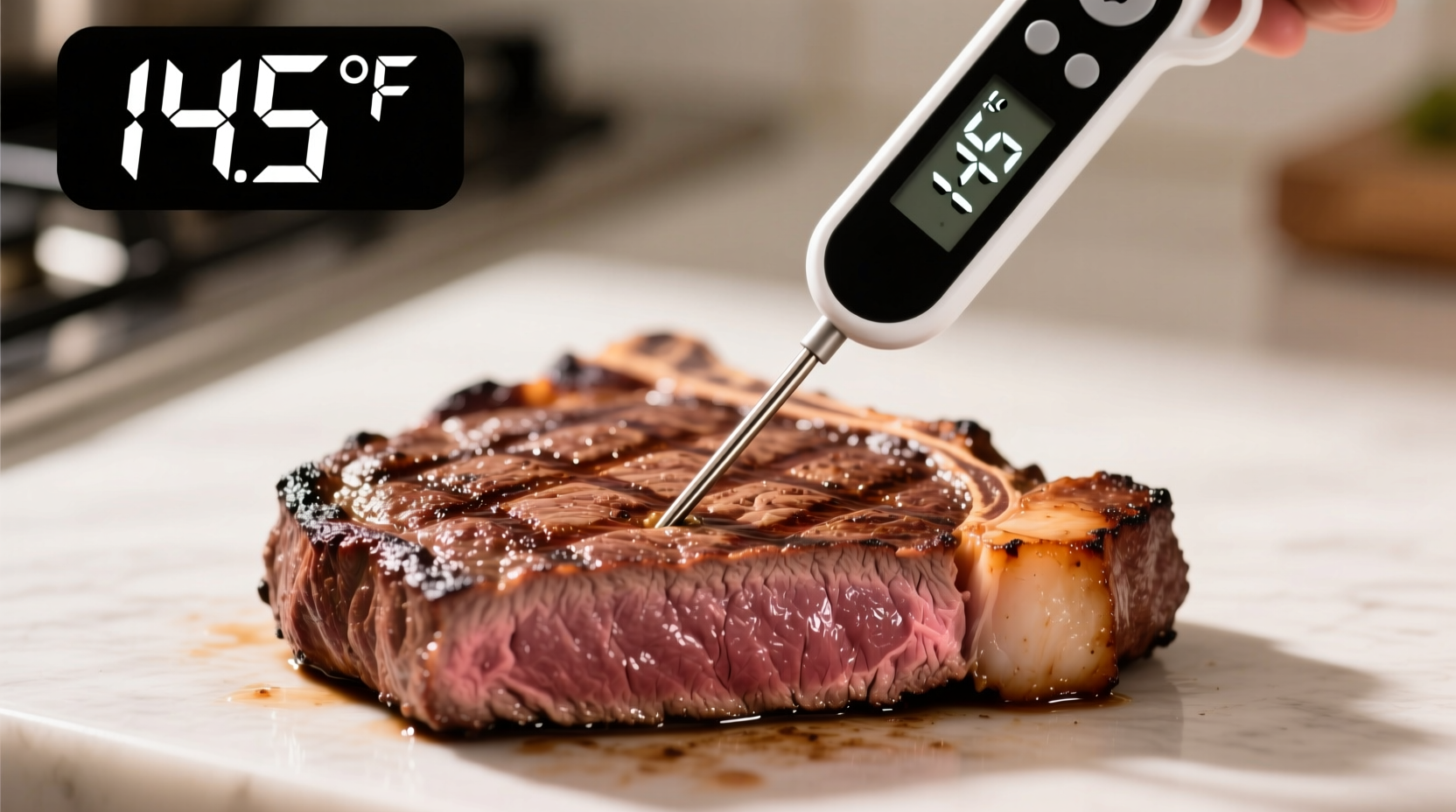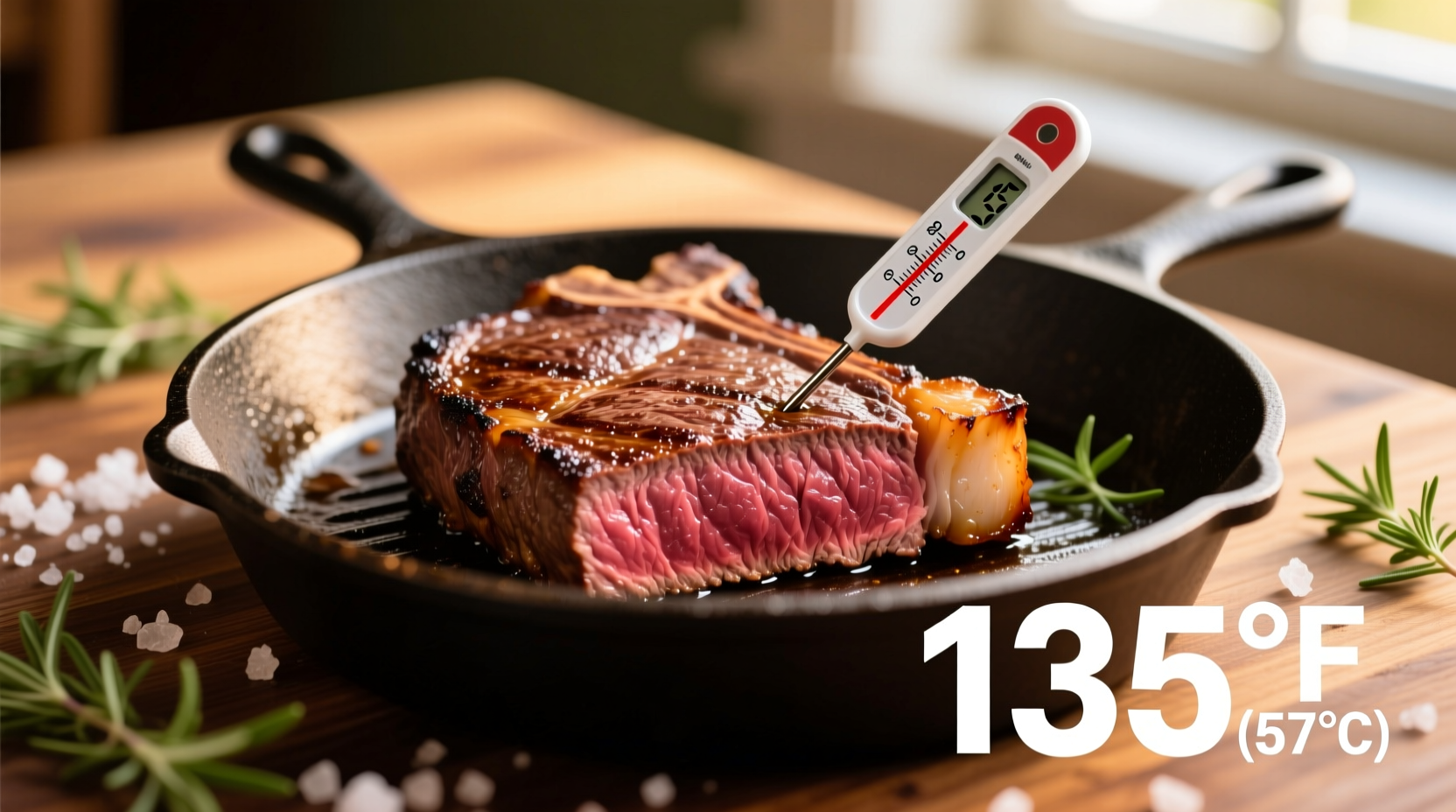Getting beef temperature right isn't just about perfect doneness—it's critical for food safety and maximizing flavor. Whether you're grilling a ribeye or preparing meatloaf, understanding precise temperature requirements prevents foodborne illness while delivering restaurant-quality results in your kitchen.
Why Beef Temperature Matters: Safety and Quality Combined
Undercooked beef can harbor dangerous pathogens like E. coli and Salmonella, while overcooked beef becomes tough and loses its natural juices. The USDA Food Safety and Inspection Service has established science-based temperature guidelines that eliminate harmful bacteria while preserving optimal texture and flavor.
"Many home cooks rely on color or touch to determine doneness, but these methods are unreliable," explains Antonio Rodriguez, culinary expert with professional kitchen experience. "A digital thermometer is the only accurate way to verify your beef has reached a safe temperature."
| Beef Type | Minimum Safe Temperature | Rest Period | Doneness Level |
|---|---|---|---|
| Steaks & Roasts (whole cuts) | 145°F (63°C) | 3 minutes | Medium Rare |
| Ground Beef | 160°F (71°C) | None required | N/A |
| Pre-cooked Ham | 140°F (60°C) | N/A | Heated through |
How Beef Temperature Guidelines Have Evolved
Food safety standards for beef cooking temperatures have evolved significantly based on scientific research. In 1989, the USDA recommended cooking ground beef to 155°F, which was later increased to 160°F in 1993 following E. coli outbreaks. The current 145°F standard for whole cuts with a rest period, established in 2011, reflects improved understanding of pathogen elimination through both temperature and time.
This evolution demonstrates why following current guidelines matters—older cookbooks or family traditions may recommend unsafe temperatures. The FDA Food Code, updated every four years, incorporates the latest food safety research to protect consumers.
Measuring Temperature Accurately: Professional Techniques
Proper temperature measurement requires more than just having a thermometer. Follow these professional techniques:
- Use the right thermometer: Instant-read digital thermometers provide the most accurate results (within ±1°F)
- Insert correctly: Place the probe into the thickest part of the meat, avoiding bone, fat, or gristle
- Check multiple spots: Especially with irregularly shaped cuts, take readings from several areas
- Wait for stabilization: Keep the thermometer in place until the reading stops changing (typically 10-15 seconds)
- Calibrate regularly: Test your thermometer in ice water (should read 32°F/0°C) or boiling water (212°F/100°C at sea level)

Understanding Carryover Cooking and Resting Time
Beef continues cooking after removal from heat due to residual heat—a phenomenon called carryover cooking. This is why the USDA specifies a 3-minute rest period for whole cuts cooked to 145°F. During this time:
- Internal temperature typically rises 5-10°F
- Juices redistribute throughout the meat
- Connective tissues continue to break down
- Final texture becomes more tender
"That rest period isn't optional—it's when the magic happens," notes Rodriguez. "Cutting into beef too soon releases all those precious juices onto your cutting board instead of staying in the meat."
Special Considerations for Different Beef Cuts
Not all beef is created equal when it comes to temperature requirements. Understanding context boundaries is essential:
- Ground beef: Must reach 160°F throughout because surface bacteria get distributed during grinding
- Brisket and chuck: Can be safely served at 145°F but benefits from higher temperatures (195-205°F) to break down connective tissue
- Prime rib: Many chefs pull it at 125-130°F for rare, knowing it will rise to 130-135°F during resting
- Vacuum-sealed (sous vide): Can be cooked at lower temperatures for longer periods (130°F for 2+ hours) for precise doneness
Avoiding Common Temperature Mistakes
Even experienced cooks make these temperature errors:
- Trusting color over temperature: Beef can appear brown before reaching safe temperatures, or remain pink after reaching them
- Not accounting for grill heat variations: Different areas of your grill can vary by 25°F or more
- Measuring too early: Checking temperature repeatedly lets heat escape and prolongs cooking time
- Ignoring altitude: At higher elevations, water boils at lower temperatures, affecting cooking times
- Forgetting carryover: Not accounting for the 5-10°F temperature rise during resting
Special Situations and Safety Considerations
Certain circumstances require extra temperature precautions:
- For immunocompromised individuals: Consider cooking ground beef to 165°F for added safety
- When marinating: Always marinate in the refrigerator, not at room temperature
- Leftover safety: Refrigerate cooked beef within 2 hours (1 hour if ambient temperature exceeds 90°F)
- Reheating: Bring leftovers to 165°F to ensure safety
Following these guidelines ensures your beef dishes are both delicious and safe. Remember that a reliable digital thermometer is your most valuable kitchen tool for achieving perfect results every time—don't guess, measure!











 浙公网安备
33010002000092号
浙公网安备
33010002000092号 浙B2-20120091-4
浙B2-20120091-4